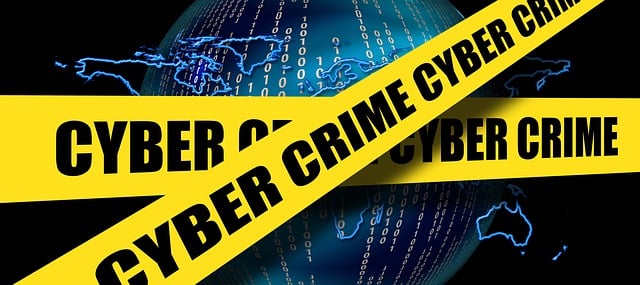In New York City, especially Manhattan, IT asset disposal is a critical process for businesses to securely dispose of digital assets while adhering to data protection regulations. This involves comprehensive data sanitization and secure destruction methods to protect sensitive information and minimize environmental impact. Strict local laws mandate secure data erasure or physical destruction before recycling, with hefty fines for non-compliance. Businesses can choose eco-friendly options like authorized facilities in Staten Island, ensuring responsible e-waste management and contributing to data security and sustainability.
In the dynamic landscape of data security, New York City stands as a hub where robust data protection measures are paramount. This article delves into the critical aspect of secure data destruction in NYC, focusing on IT asset disposal in Manhattan as a key player. We explore legal requirements for data eradication, offering insights on best practices for safe data removal. Understanding these processes is essential for businesses aiming to navigate NYC’s stringent data privacy regulations effectively.
- Understanding Secure Data Destruction in NY
- IT Asset Disposal: Manhattan's Role
- Legal Requirements for Data Eradication
- Best Practices for Safe Data Removal
Understanding Secure Data Destruction in NY

In New York City, especially within bustling areas like Manhattan, Brooklyn, and Queens, secure data destruction is a paramount concern for businesses looking to dispose of their digital assets responsibly. IT asset disposal in Manhattan NY involves more than just recycling or discarding electronic equipment; it entails complete data sanitization to protect sensitive information from falling into the wrong hands. This process ensures that hard drives, servers, computers, and other digital devices are rendered unreadable, ensuring compliance with data protection regulations.
When considering IT asset liquidation sales in areas like the Upper West Side or eco-friendly IT asset disposal in Queens, businesses can adopt sustainable practices while maintaining data security. Digital device decommissioning goes beyond mere physical destruction; it requires specialized techniques to overwrite or destroy data, leaving no trace of sensitive files. This meticulous approach is crucial for organizations seeking to minimize their environmental impact while adhering to strict data privacy standards.
IT Asset Disposal: Manhattan's Role

In New York City, particularly in bustling Manhattan, IT asset disposal plays a crucial role in ensuring data security before resale. As businesses continuously update their hardware and software, it’s essential to properly dispose of outdated equipment to prevent data breaches and protect sensitive information. Manhattan’s robust legal framework for IT equipment removal ensures that companies adhere to stringent data protection regulations.
The city’s e-waste recycling statistics reflect a growing awareness among businesses about the environmental impact of electronic waste. Legal IT equipment removal services in Chelsea, for instance, have become increasingly popular as organizations seek to meet both legal obligations and ecological responsibilities. This dual focus on data security and sustainable e-waste management makes Manhattan a leader in responsible IT asset disposal across New York State.
Legal Requirements for Data Eradication

In New York City, including Manhattan and beyond, businesses must adhere to stringent legal requirements when it comes to data destruction and IT asset disposal. The Electronic Waste Disposal Regulations mandate proper handling and recycling of electronic waste, ensuring minimal environmental impact. This includes secure data erasure or physical destruction of devices before they are recycled, a critical step to safeguard sensitive information. Companies that fail to comply with these regulations face hefty fines and legal repercussions.
When considering IT asset disposal in Queens or anywhere in New York City, it’s essential to follow eco-friendly practices. Proper e-waste disposal compliance is not just a legal obligation but also a responsible approach to managing electronic resources while promoting sustainability. This involves ensuring data security and environmental stewardship through specialized recycling programs that cater to the unique challenges of IT asset retirement.
Best Practices for Safe Data Removal

When it comes to secure data destruction in NY, especially for businesses in Manhattan and beyond, best practices are paramount. One crucial step is ensuring proper IT asset disposal. This involves thoroughly wiping or destroying all digital media, including hard drives, SSDs, and mobile devices, to prevent unauthorized access to sensitive information. Engaging a reputable service provider offering secure data destruction contracts can help organizations comply with strict electronic waste disposal regulations in New York City.
Additionally, businesses should consider the environmental impact of IT asset disposal. Recycling old computers in Staten Island or other authorized facilities not only reduces e-waste but also ensures that materials like precious metals and plastics are reused, minimizing the ecological footprint associated with electronic waste disposal regulations in New York City. Adhering to these practices guarantees data security and contributes to a more sustainable future.
Secure data destruction in New York, especially within the bustling IT landscape of Manhattan, requires adherence to strict legal requirements and best practices. IT asset disposal is not just about selling or recycling equipment; it’s ensuring sensitive data is permanently and legally eradicated. Understanding these regulations and implementing robust procedures for data destruction, such as secure wiping, shredding, or degaussing, are vital steps in protecting your business from data breaches and maintaining compliance with New York’s strict privacy laws. When choosing IT asset disposal services in Manhattan NY, prioritize companies that specialize in secure data destruction to safeguard your organization’s information.














